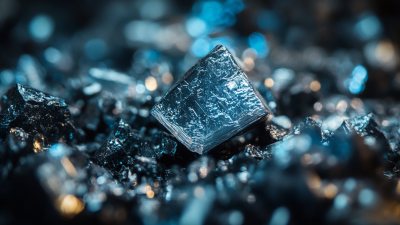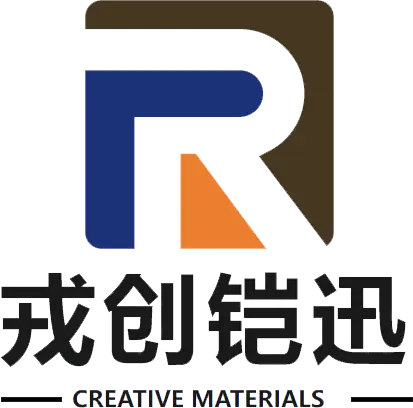 Aluminium Oxynitride, often referred to as AlON, has emerged as a groundbreaking material in the field of advanced optics, providing a unique combination of properties that fulfill the demanding requirements of modern applications. According to a report from Markets and Markets, the global optics market is projected to reach $57.67 billion by 2024, driven by innovations in materials like AlON which enhance performance in various optical systems. Its excellent mechanical strength and thermal stability make Aluminium Oxynitride particularly suitable for use in high-pressure environments and extreme conditions.
Aluminium Oxynitride, often referred to as AlON, has emerged as a groundbreaking material in the field of advanced optics, providing a unique combination of properties that fulfill the demanding requirements of modern applications. According to a report from Markets and Markets, the global optics market is projected to reach $57.67 billion by 2024, driven by innovations in materials like AlON which enhance performance in various optical systems. Its excellent mechanical strength and thermal stability make Aluminium Oxynitride particularly suitable for use in high-pressure environments and extreme conditions.
Furthermore, Aluminium Oxynitride exhibits outstanding optical transparency across a wide range of wavelengths, including the visible and infrared spectra. This capability has positioned it as a material of choice for military, aerospace, and telecommunications industries, where precise optical performance is critical. A study published in the Journal of Optical Materials highlighted that AlON-based components can outperform traditional materials such as glass and polycarbonate in terms of scratch resistance and overall durability. As the demand for more efficient and robust optical materials continues to rise, understanding the benefits of Aluminium Oxynitride becomes crucial for researchers and industry professionals seeking to push the boundaries of optical technology.
Aluminium oxynitride (ALON) is rapidly gaining attention in the field of advanced optical applications, particularly for next-generation optical systems. One of its key advantages is its exceptional hardness and resistance to scratches, which makes it an ideal candidate for protective windows in harsh environments. According to a recent industry report, materials like ALON exhibit hardness levels comparable to those of sapphire, ensuring long-lasting performance even in demanding conditions. This durability translates directly to reduced maintenance costs and prolonged life cycles for optical systems.
Another significant benefit of ALON is its excellent optical transparency across a wide spectrum, including visible and infrared wavelengths. Research indicates that ALON can achieve light transmission rates exceeding 80%, which is crucial for high-performance optical applications such as sensors and laser systems. As the electronics industry pushes towards greater miniaturization and integration of components, efficient heat dissipation has become paramount. The lightweight and thermally stable properties of ALON can complement advanced cooling solutions, such as diamond composite materials, to enhance overall system performance. This synergy between advanced materials is essential for the development of more efficient and robust optical systems capable of meeting the demands of the future.
Aluminium oxynitride, commonly known as ALON, has emerged as a revolutionary material in the realm of advanced optical applications, particularly due to its remarkable durability and resistance characteristics. One of the key advantages of ALON is its high strength and impact resistance, which allow it to withstand extreme conditions without compromising optical clarity. This makes it an ideal choice for military and aerospace applications where reliability is paramount.
Moreover, ALON exhibits impressive thermal stability and resistance to chemical erosion. Its unique composition enables it to endure harsh environments that would typically degrade standard optical materials. In scenarios involving exposure to intense heat, corrosive substances, or abrasive elements, ALON maintains its structural integrity and optical performance. This durability not only prolongs the lifespan of optical systems but also reduces maintenance costs, making it a cost-effective solution for industries that demand both performance and longevity in their materials.
| Benefit | Description | Applications | Resistance Level |
|---|---|---|---|
| Enhanced Durability | Aluminium oxynitride offers superior impact resistance compared to conventional materials. | Optical windows, protective armor | High |
| Thermal Stability | Maintains performance in extreme temperature variations. | Aerospace, military systems | Excellent |
| Chemical Resistance | Resists corrosion and chemical attack from various environments. | Industrial optics, chemical processing | High |
| Optical Clarity | Provides excellent transmission and clarity across a range of wavelengths. | Laser optics, high-precision imaging | Moderate |
| Lightweight | Offers a lower weight compared to traditional materials with similar durability. | Portable defense systems, lightweight structures | High |
Aluminium oxynitride (ALON) has emerged as a groundbreaking material in the field of advanced optics, particularly due to its superior optical transparency across a wide range of wavelengths. This unique property makes it an exceptional choice for applications spanning from visible light to infrared. Unlike traditional optical materials, ALON demonstrates a remarkable ability to maintain clarity and performance under various environmental conditions, which is crucial for applications in challenging settings.
Furthermore, the wide transparency range of aluminium oxynitride enables its use in diverse industries, including defense, telecommunications, and aerospace. This versatility allows for the design of advanced optical systems that require robust performance without compromising on quality. The ability to transmit light effectively while resisting damage from impacts or environmental stressors positions ALON as a preferred material for high-end optical applications, where reliability and efficiency are paramount. Its exceptional transmission characteristics not only enhance device functionality but also expand the possibilities for innovative optical designs.
This chart illustrates the superior optical transparency of Aluminium Oxynitride (ALON) across various wavelengths compared to traditional materials. The data showcases the percentage of light transmission at specific wavelengths, highlighting ALON's efficiency in diverse optical applications.
 Aluminium oxynitride, often referred to as ALON, stands out in the realm of optical materials due to its unique lightweight properties. This characteristic plays a crucial role in enhancing the design flexibility of optical devices. Traditional optical materials can often be cumbersome, leading to limitations in design and application. In contrast, ALON’s reduced weight allows designers to create more compact and versatile optical systems, which can be particularly advantageous in aerospace, defense, and advanced imaging technologies.
Aluminium oxynitride, often referred to as ALON, stands out in the realm of optical materials due to its unique lightweight properties. This characteristic plays a crucial role in enhancing the design flexibility of optical devices. Traditional optical materials can often be cumbersome, leading to limitations in design and application. In contrast, ALON’s reduced weight allows designers to create more compact and versatile optical systems, which can be particularly advantageous in aerospace, defense, and advanced imaging technologies.
The lightweight nature of aluminium oxynitride not only facilitates innovative designs but also improves the overall performance of optical devices. By integrating ALON, manufacturers can reduce the physical burden on mounting structures without compromising durability or functionality. This enhancement is vital in high-performance applications where every gram counts. Furthermore, the ability to implement more streamlined designs can lead to significant advancements in terms of portability and ease of use, making ALON an attractive choice for developers looking to push the boundaries of optical technology.
Aluminium oxynitride, often known as "transparent alumina," is emerging as a pivotal material in advanced optical applications, particularly within military and aerospace technologies. Its unique combination of properties, including high strength, chemical durability, and remarkable optical transmission in the infrared spectrum, makes it an ideal candidate for radomes and other protective structures. According to recent market analysis reports, the radome market, valued at approximately $2.5 billion in 2023, is expected to see significant growth driven by the increasing demand for lightweight, resilient materials that can withstand harsh environmental conditions.
The potential for innovative applications is particularly notable in next-generation military systems, where performance and reliability are crucial. As defence agencies look to enhance their surveillance and targeting systems, materials like aluminium oxynitride offer an advantage due to their superior performance compared to traditional materials. The estimated compound annual growth rate (CAGR) for radome applications within the aerospace sector alone is expected to reach 5.6% over the next five years, underscoring the material's emerging role in revolutionizing military and aerospace technologies. The integration of such advanced materials will not only boost operational capabilities but also contribute to the ongoing evolution of eco-friendly and efficient technology solutions in these critical sectors.







